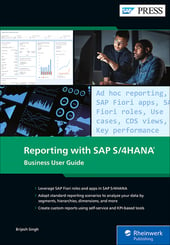In this video, learn about two SAP Fiori apps that you can use for reporting on product profitability in SAP S/4HANA.
Transcript:
In this video, we’ll discuss and analyze profitability by different product groups and products using the Product Profitability and Product Profitability with Production Variances SAP Fiori apps in SAP S/4HANA. With these apps, you can analyze contribution margins for individual products using different profitability characteristics. You can not only calculate and analyze contribution margins for a single product but also analyze your profitability by multiple product groups or the entire product line.
First, let’s take a quick look at the Product Profitability app and learn how to enable profitability reporting by product sold groups and associated products. This app makes use of semantic tags for the calculation of measures such as Billed Revenue, Recognized Revenue, Contribution Margin, and others.
In our example, we’ve selected product sold groups for financial statement version BS40 and used a subset of different measures that are predelivered with this app. The amounts displayed for the measures used in the app for illustration are calculated in global currency. Additional measures are available that can be used to display the amounts in company code currency if needed.
Notice that measures such as Billed Revenue, Recognized Revenue, and others are displayed as rows, and the Product Sold Group dimension is displayed as a column showing results for all the product sold groups that are added as filters in the input selection.
To analyze the results for all the products under a specific product sold group, first you need to filter the results for a product sold group by choosing Filter > Keep Filter Value, and then use the navigation panel to add the product sold dimension as a column in the layout.
For illustration purposes, we’ve applied the filter for the Product Sold Group Racing and then added the Product Sold dimension as a column in the layout. By doing this, you’ll be able to see the contribution margin numbers associated for the MZ-FG-R100, MZ-FG-R200, and MZ-FG-R300 products under the Product Sold Group Racing.
Only a subset of the measures is shown as an example, but you have the flexibility to select and add additional measures that are predelivered in the results layout for your analysis. You can also add a custom measure to meet additional reporting requirements.
Like the Product Profitability app, the Product Profitability with Production Variances app also makes use of semantic tags for the calculation of measures, but it has additional measures such as Input Price Variance, Input Quantity Variance, and others as well. When you compare the Product Profitability app with the Product Profitability with Production Variances app, the main difference is related to the availability of additional measures with built-in calculation logic for variances that you can use for profitability reporting with variances.
Let’s take a quick look at the Product Profitability with Production Variances app and analyze the key differences with the Product Profitability app. As shown, this app is using the same product sold groups which were used earlier for Financial Statement Version BS40. Additional measures to display variance information are also available in the app. Measures such as Input Price Variance, Input Quantity Variance, Resource Usage Variance, and others can be used to analyze product profitability with production variances.
In addition, we’ve assigned semantic tags to FS Items (financial statement items) nodes.
As highlighted, semantic tags 20, 22, and 23 are assigned to FS Item nodes in FS Version BS40.
This table highlights the linking of the semantic tags with the respective measure on the Product Profitability with Production Variances app using FS Version BS40.
Similarly, you can assign many other semantic tags to other FS Item nodes of the FSV. These semantic tags represent measures within the app. For example, the calculation logic used for the key measures such as Contribution Margin I and Contribution Margin II uses a combination of these measures:
Contribution margin I = Billed revenue + Sales deduction + Revenue adjustment + COGS variable
Contribution margin II = Contribution margin I + COGS fixed + Price differences
To finish off, let’s talk about the assignment of semantic tags to FSV items. For correct calculation of measures in the app, you must double-verify the assignment of all the semantic tags to the correct accounts or FS Item nodes of the FSV. It’s common that different sets of semantic tags are used for different FSVs, so it’s important and recommended to verify these assignments to avoid incorrect calculation of measures. The assignment of semantic tags to accounts or FS Item nodes fully relies on the FSV used in the app.



Comments